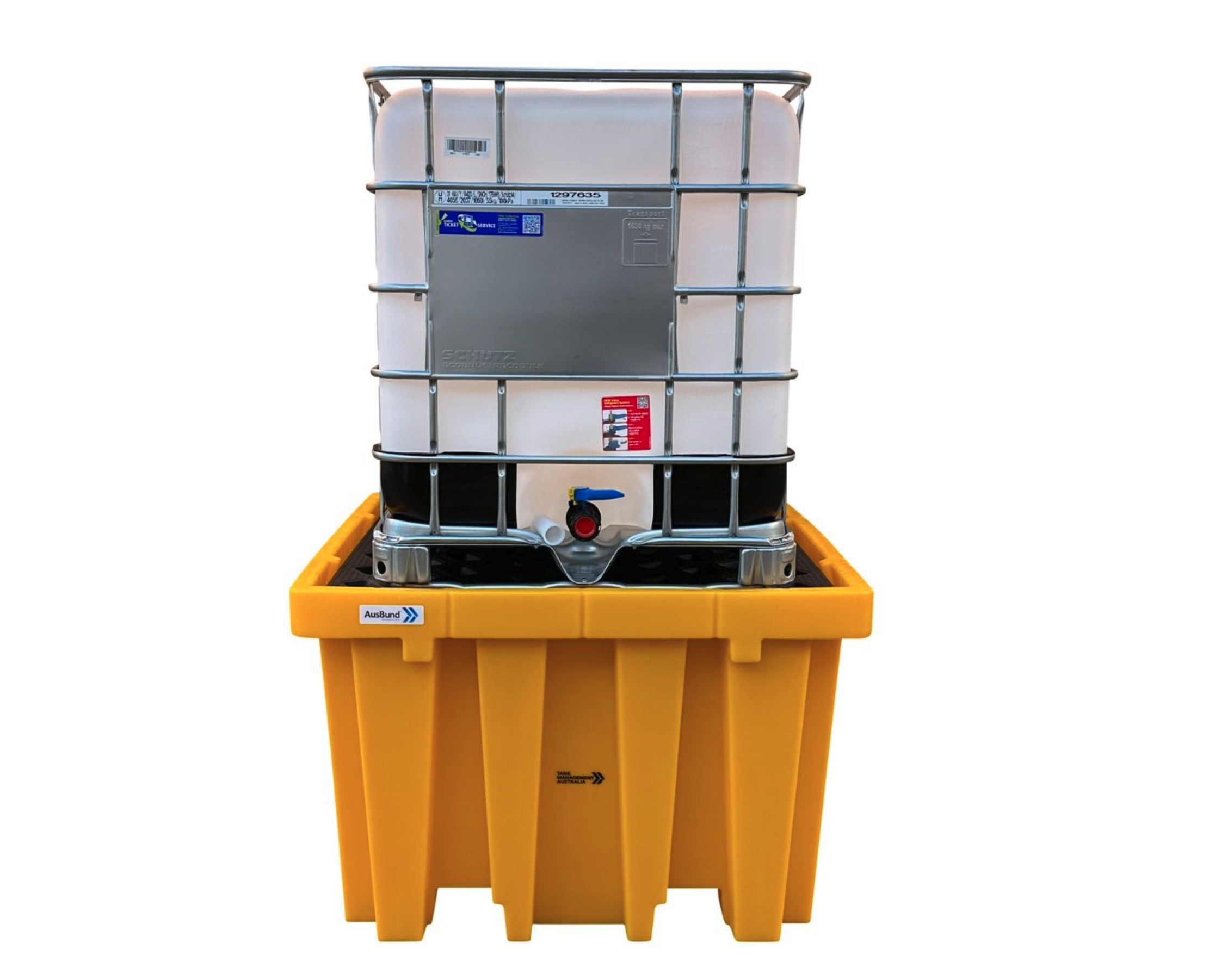
How IBC Bunds Prevent Environmental Damage During Chemical Storage and Transport
Storing and transporting hazardous chemicals comes with significant environmental and regulatory responsibilities. A single spill can lead to soil and water contamination, hefty fines, and reputational damage. Businesses that deal with toxic and corrosive substances must implement proper containment measures to mitigate risks.
What Are IBC Bunds and How Do They Work?
IBC bunds are specially designed containment platforms that hold IBCs, providing a safeguard against leaks, spills, or overflows. They function as a secondary containment system, capturing hazardous liquids that escape from the primary container. This prevents chemicals from reaching the ground, drains, or waterways, reducing environmental harm and ensuring compliance with Australian standards for hazardous chemical storage.
Here’s how IBC bunds prevent environmental damage and why they should be a key part of your chemical management strategy.
Preventing Environmental Contamination
One of the most significant risks of chemical spills is environmental contamination. Toxic substances—such as industrial solvents, pesticides, and acids—can have devastating effects on ecosystems if improperly stored. According to the ADG Code, toxic substances can cause harm through inhalation, skin contact, or ingestion, making proper containment essential.
IBC bunds help prevent:
Soil and water pollution – By containing leaks, bunds stop hazardous chemicals from seeping into groundwater or nearby ecosystems.
Airborne contamination – Vapours and mist from certain chemicals can be contained more effectively, reducing exposure risks.
Cross-contamination – Bunds keep incompatible chemicals separate, avoiding dangerous reactions and enhancing workplace safety.
Compliance with Environmental Regulations
Regulatory compliance is a critical aspect of chemical storage. Failure to meet standards can result in penalties, legal action, and increased scrutiny from environmental agencies. IBC bunds help businesses comply with:
Australian Dangerous Goods Code (ADG Code) – Classifies and mandates proper storage of toxic substances.
Safe Work Australia’s Chemical Storage Guidelines – Recommends using bunds to manage risks associated with hazardous chemicals.
Environmental Protection Regulations – Require businesses to implement spill prevention measures to protect natural resources.
Using IBC bunds ensures that spills are contained within an approved secondary system, helping businesses meetstandard regulations and avoid environmental liabilities.
Protecting Workers from Corrosive and Toxic Substances
The risks of handling chemicals in the workplace are serious, especially when dealing with substances that are both toxic and corrosive. Chemicals like sulfuric acid, hydrochloric acid, and caustic soda can cause severe burns, release hazardous vapours, and degrade metal surfaces. Without proper containment, workers are at risk of chemical burns, respiratory issues, and long-term exposure effects. IBC bunds provide a critical layer of protection by containing leaks and spills, preventing hazardous chemicals from spreading and reducing direct exposure risks.
Key safety measures include:
✅ Material Compatibility – Using corrosion-resistant bunds (polyethylene or coated steel) ensures they can safely contain aggressive chemicals without degrading.
✅ Ventilation and Vapour Control – Proper airflow in storage areas helps prevent the buildup of toxic fumes that could harm workers.
✅ Personal Protective Equipment (PPE) – While IBC bunds serve as the first line of defence against spills and leaks, workers handling corrosive and toxic substances must still wear chemical-resistant gloves, safety goggles, and respirators. This ensures protection against accidental splashes, vapours, or direct contact that bunds alone cannot prevent.
✅ Spill Containment and Training – IBC bunds act as a safeguard, but workers must also be trained to respond quickly to spills and safely handle hazardous substances.
Cost Savings and Risk Management
Beyond environmental and regulatory benefits, IBC bunds help businesses save costs associated with spill cleanup, lost product, and legal penalties. A single uncontrolled spill can require expensive decontamination, damage infrastructure, and disrupt operations.
IBC bunds reduce risks by:
Containing spills before they spread, minimising cleanup costs.
Preventing damage to storage areas, preserving floors, drains, and nearby equipment.
Reducing insurance liabilities, as businesses with robust spill prevention measures often benefit from lower premiums.
Choosing the Right IBC Bund for Your Needs
IBC bunds are available in a variety of designs to meet the specific needs of different industrial applications, ensuring safe and efficient containment of hazardous materials:
Fixed bunds – These are built for permanent storage locations and are highly durable, making them ideal for high-risk chemicals that require long-term containment. Their robust design ensures maximum safety and compliance with environmental regulations.
Portable bunds – Lightweight and easy to move, portable bunds are perfect for temporary storage or transport. They are often made from flexible materials and can be quickly deployed, making them a versatile solution for on-the-go containment needs.
Spill pallets – Specifically designed for smaller-scale containment, spill pallets are perfect for drums and smaller IBCs. They provide an additional layer of protection by catching leaks or spills, making them an essential tool for maintaining a safe and clean workspace.
A Safer and More Sustainable Industry
IBC bunds are a critical component of responsible chemical management. They protect the environment, ensure regulatory compliance, and safeguard businesses from financial and reputational harm. By investing in the right containment solutions, businesses can mitigate the risks associated with hazardous chemical storage and transport while contributing to a safer and more sustainable industry.







 Previous article
Previous article